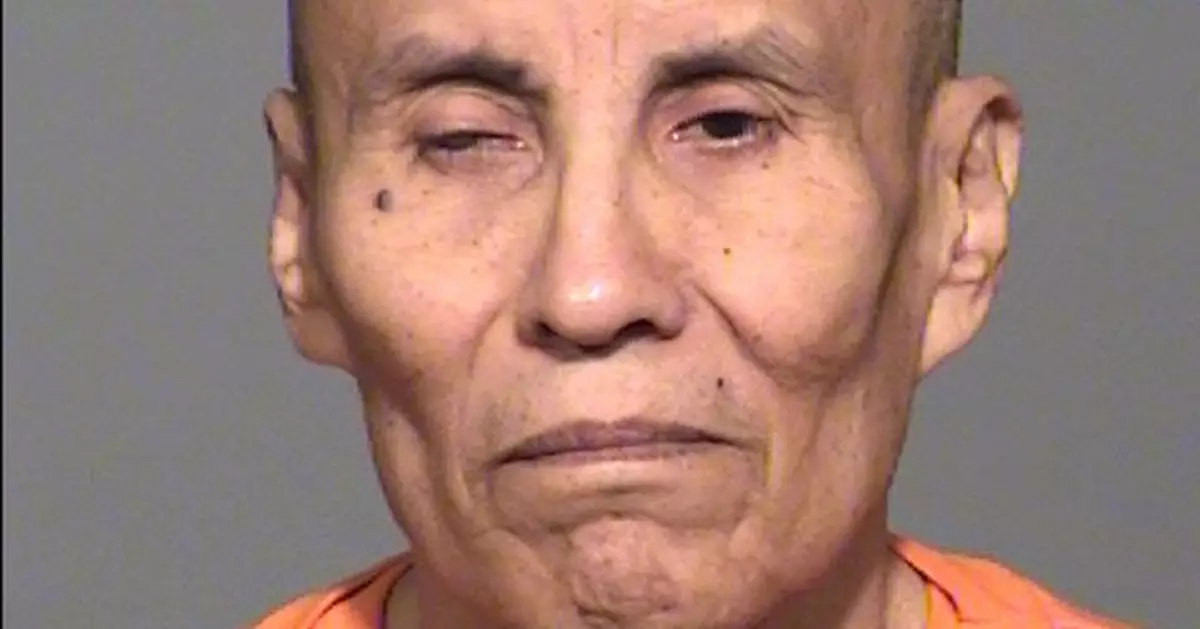Arizona remains on track, at least for now, to use the death penalty for the first time in nearly eight years in an execution in which a condemned prisoner is being given the option of being put to death by the gas chamber — a method that hasn't been used in the U.S. in decades.
Clarence Dixon's warrant for execution sets a Thursday deadline for deciding whether he will be put to death with an injection of pentobarbital or with hydrogen cyanide gas for his murder conviction in the 1977 killing of Arizona State University student Deana Bowdoin. Lethal injection is the default method if Dixon doesn't make a choice.
The last gas chamber execution in the United States occurred in 1999 in Arizona before the country rejected the brutal nature of the deaths.
The execution is scheduled for May 11, though prosecutors have said it will likely be delayed if a judge goes forward with a May 3 hearing to determine whether Dixon is mentally fit to be executed.
One of Dixon's legal efforts failed Monday when a judge dismissed his lawsuit that challenged the current makeup of the Arizona Board of Executive Clemency, arguing the board's makeup violates a law that lets only two people from the “same professional discipline” serve on the board. Three board members worked previously in law enforcement.
Superior Court Judge Stephen Hopkins concluded Dixon’s lawyer used an extremely broad definition of “professional discipline” and pointed out the relevant law doesn’t use the words “job” or “employment” in context of the board’s membership.
The judge wrote Dixon’s lawyer failed to show there are more than two people on the board from the same discipline, explaining the three members who were previously employed in law enforcement had worked in different disciplines within the field.
“Mr. Dixon is entitled to a fair clemency hearing before an impartial Clemency Board that complies fully with state law, not one that is illegally stacked with law enforcement officials,” Joshua Spears, an attorney for Dixon, said in a statement. "We are reviewing our options to appeal the Superior Court’s ruling.”
In a separate lawsuit, Dixon's lawyers say he is mentally unfit to be executed, arguing their client’s psychological problems keep him from rationally understanding why the state wants to end his life.
Arizona Attorney General Mark Brnovich’s office has asked the state Supreme Court to call off the competency hearing in Pinal County.
Prosecutors, who said in court papers that the competency hearing would likely delay the execution, are seeking to throw out the order that concluded defense lawyers had shown reasonable grounds for planning a hearing over Dixon’s psychological fitness.
Authorities have said the 21-year-old Bowdoin, who was found dead in her apartment, had been raped, stabbed and strangled. Dixon had been charged with raping Bowdoin, but the charge was later dropped on statute-of-limitation grounds. He was convicted, though, in her death.
Officials in Arizona have declined to say why they secretly refurbished the gas chamber at the prison in Florence, southeast of Phoenix, in late 2020. However, the move came as states find it increasingly difficult to secure lethal injection drugs as manufacturers refuse to supply them.
It’s unclear whether any of Arizona’s death-row prisoners have expressed a preference for the gas chamber.
Lethal-gas execution laws remain on the books in Arizona, California, Missouri and Wyoming. Arizona’s gas chamber refurbishment is again being condemned internationally, including coverage in Israel and Germany drawing parallels to Holocaust atrocities.
The last time Arizona used the death penalty was in July 2014, when Joseph Wood was given 15 doses of a two-drug combination over two hours in an execution that his lawyers said was botched.
States, including Arizona, have struggled to buy execution drugs in recent years after U.S. and European pharmaceutical companies began blocking the use of their products in lethal injections. Last year, Arizona corrections officials revealed that they had finally obtained a lethal injection drug and were ready to resume executions.
Arizona has 112 prisoners on death row.


